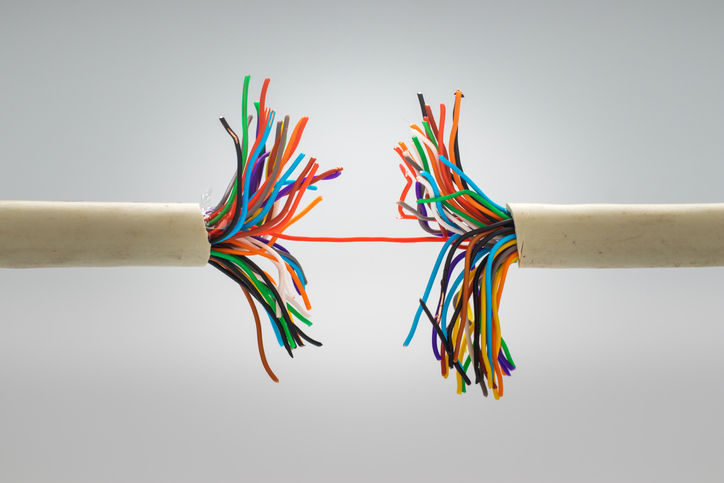When you get a job in healthcare, whether it's a nurse, doctor, or data analyst, you want to help people. The ultimate goal of healthcare is to help people live healthier and happier lives. However, not all lives receive equal care. In the United States, there are countless variables regarding access and delivery of care. One barrier to care is living in rural areas, where one in five Americans live. We understand that access to health care can be difficult in isolated settings, but what can and should we do to leverage new technology to improve the lives of an estimated 60 million Americans? We're only just beginning to understand what we have to do.
As the nation's health care costs reach trillions of dollars, it is frustrating to see disparities in health outcomes in rural areas, including significantly higher mortality rates than in urban areas. A possible contributing factor to these mortality rates is also high levels of chronic health conditions such as heart disease, diabetes, and high blood pressure. There is no silver bullet to eliminate these disparities, but before you can solve the problem, you need to identify the problem.
Growing health care disparities: Fewer treatment options and fewer basic testing options. Lack of regular monitoring further exacerbates these disparities. People in rural areas are less likely to be monitored for heart disease, blood pressure, weight, and diabetes. As with these patients who lack appropriate care, they often lack educational tools to improve care. When care options are already so limited, where should patients start looking for the care they need and will benefit most? Lack of health insurance: If patients can't pay for treatment, they can't afford it. We often don't try. The majority of patients consider cost when receiving treatment. According to U.S. Census data, 10% of people in urban areas are uninsured. In rural areas, that number jumps to 12%. Long travel distances: A close colleague of mine lives a three-hour drive from the nearest medical center. It is impossible to go to see a doctor during lunch break. She has been forced to take advantage of benefits such as paid time off to prioritize her health. If the various scheduling departments are in her favor, you can group all your appointments together to save time, money, and paid time off. Lack of access to private or public transport: Only some people are lucky enough to have access to private transport or a car. And rural communities often don't have access to public transportation. When people in rural areas are unable to physically make it to their appointment time, it creates new obstacles to receiving care. Lack of Internet Connection: According to the Federal Communications Commission, 17% of people living in rural areas do not have broadband access. This means 10 million people in rural areas lack reliable internet connectivity, making the ever-expanding browser-based telemedicine services controversial.
More than 60 million Americans experience one or all of these hurdles to receiving appropriate health care. These problems will continue to exist, but some technologies and advances may be able to address these glaring problems that so many people face.
The COVID-19 pandemic has shown us how useful telemedicine is and will continue to be. In the long term, this is a lifeline that will greatly help rural health organizations close the gap in access to care. But telemedicine isn't perfect. To truly provide a comprehensive strategy to improve access to care in rural America, other technologies must be implemented in parallel with telehealth.
Broadband: Connecting the rest of the unconnected. At the very least, allow them to connect so they can access care. Government programs at both the state and federal level are working to address this contradiction, such as the “Internet for All” initiative. The sooner we do that, the better it is for the health of potentially millions of people. Wearable and wireless devices: These devices allow patients to continuously monitor their health and provide critical data to healthcare providers. Smart scales, blood pressure monitors, and glucose meters are all examples of devices that can alert healthcare providers to potential red flags for patients in rural areas. A significant challenge lies in making these devices affordable and available to rural populations. Fortunately, several organizations are working to bring these tools to underserved communities. When warning signs are recognized, care can be mobilized. Mobile care: We have to bring care to these people. Send mobile clinics to rural areas. These mobile units can be equipped to provide a variety of services, from mammography to testing services. Telemedicine is great, but some aspects of healthcare require human intervention. Data and analytics: Technology does more than just provide direct care. It also helps healthcare organizations identify trends and disparities. A robust data analytics platform can track community health metrics so healthcare providers can identify areas of need and allocate resources accordingly. Artificial intelligence can analyze this data to determine disparities and trends. AI can also improve healthcare searches. When patients lack the education to truly understand where to receive care, AI-powered provider search can point them in the right direction. Mail order pharmacies: By delivering medications directly to patients, mail order pharmacies ensure that rural residents can get the medications they need without having to travel long distances to the nearest pharmacy. Pill packs, which organize medications into easy-to-understand packets, make taking them easier for all patients, no matter where they live. They allow patients to take the right medication at the right time, promoting medication adherence and reducing the risk of errors. Drones: Sounds like science fiction, but it's not. At the beginning of the Covid-19 pandemic, drones were used to deliver personal protective equipment and food. At scale, prescriptions and vaccines can be distributed at a faster pace. This technology is used in some health systems for testing samples.
People in the most important professions, such as farmers and ranchers, call some of the most remote parts of the country home. Your employment choices should not compromise your health. And while there are certainly more barriers to care than the solutions described in this article, it is possible to connect rural populations to better health care. Telemedicine has proven to be immediate and effective in improving care for rural populations. But if we want to truly improve the health and lives of these 60 million rural Americans, there are technologies and solutions that we need to leverage more of and invest in more heavily.
Photo: Igor Nikshin, Getty Images

Karen Conley DNP, RN, NEA-BC is Vice President of Clinical Services at Kyruus Health. She heads the organization's Patient and Family Advisory Committee (PFAC). Through PFAC, she can learn first-hand how patients across the country, including in rural areas, are accessing health care and where they are encountering barriers.
This post is published through the MedCity Influencers program. Anyone can share their perspectives on business and innovation in healthcare on MedCity News through MedCity Influencers. Click here to learn how.

